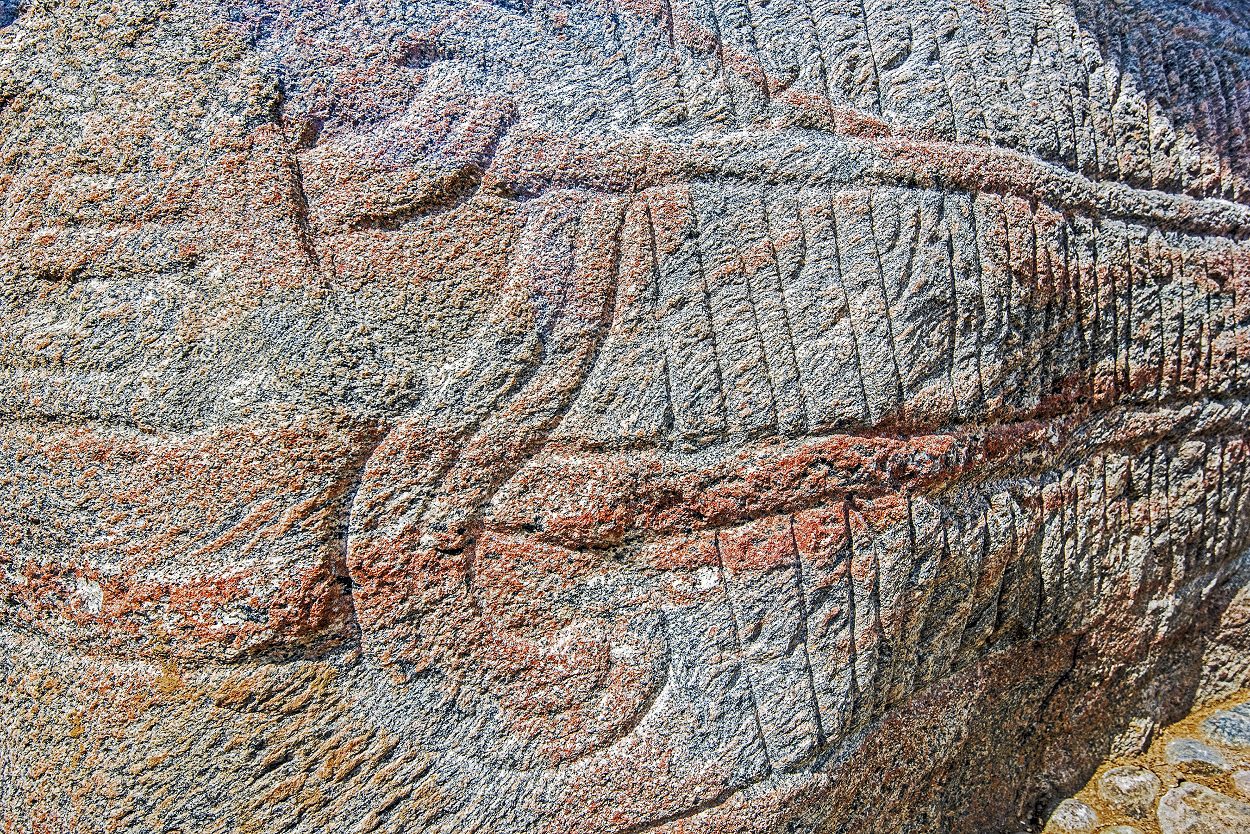Archaeologists using 3D scans have identified who carved the Jelling Stone runes, located in the town of Jelling, Denmark.
The first of the two Jelling stones was erected by King Gorm the Old in honour of his wife Thyra. Following this, a second stone was raised by King Gorm’s son, Harald Bluetooth, to commemorate his parents and to mark his victorious rule over Denmark and Norway, as well as his role in converting the Danish people to Christianity.
Researchers from the National Museum in Copenhagen have conducted 3D scans to analyse the carving tracks of the runes. Similar to handwriting, the carving techniques are relatively unique to each runesmith, as each stonemason holds the chisel at a certain angle and strikes with a certain force with the hammer.
By studying the angle of the chisel grooves and the distance between them, comparisons can be made with other rune stones, such as the Laeborg Runestone which stands approximately 30 kilometres southwest of Jelling
The analysis has revealed that the Laeborg Runestone has the same carving technique, which also has the inscription: “Ravnunge-Tue carved these runes after Thyra, his queen”.
Queen Thyra is mentioned in the two Jelling stones as the mother of Harald Bluetooth, wife of Gorm the Elder and “penitent of Denmark”, but Thyra’s name is also mentioned in two other runestones, that of Læborg, carved by Ravnunge-Tue in honor of Thyra, his queen, and that of Bække 1, which bears the inscription “Ravnunge-Tue and Fundin and Gnyple, the three made the stop of Thyra.”
For many years, researchers have debated whether Læborgstenen’s Queen Thyra is the same as the Thyra mentioned on the stones from Jelling.
According to the researchers: “The discovery in itself is interesting because it can link another person to the Jelling dynasty, but it is especially interesting because the realization brings with it another startling revelation, explains Lisbeth Imer, runologist and senior researcher at the National Museum.”
“It is an absolutely incredible discovery that we now know the name of the rune maker behind the Jelling stone, but what makes the discovery even wilder is that we know Ravnunge-Tue’s boss. It is Queen Thyra from Jelling, i.e. Harald Blåtand’s mother, there can no longer be much doubt about that, and that puts the discovery in a completely different light,” says Lisbeth Imer.
Header Image Credit : Shutterstock





